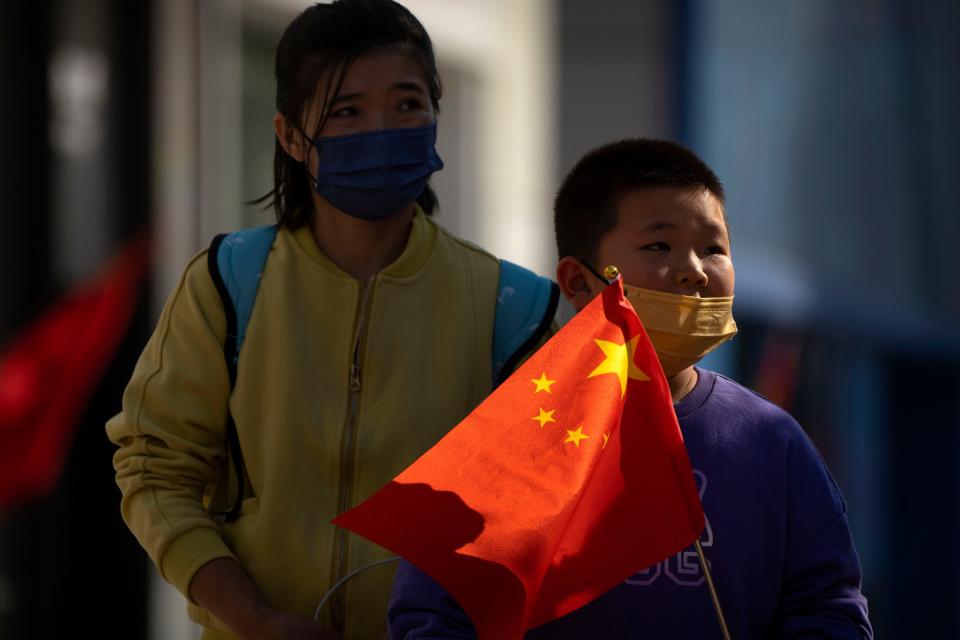Doc’s Prescription: China’s population decline in 2022 challenges its growth prospects
The National Bureau of Statistics recently reported that China’s population declined in 2022 by approximately one million people to 1.412 billion. This represents the first decline since 1961, the last year of China’s Great Famine. United Nation experts estimate China’s population will shrink by 109 million by 2050.

The decline in population will prevent China from having enough people of working age to support its historical growth rate. An economy can grow only by adding workers or producing more with the workers it has. Over the past decade, China’s productivity growth has declined by about 50%. Because of labor shortages and slower productivity gains, China will be unable to surpass the U.S. economically for many decades.
Researchers believe the lower population growth rate could mean higher labor costs in China because of a smaller pool of available workers. Yi Fuxian, an expert on Chinese demographics, wrote, "Fewer births in China will lead to an economic slowdown, a manufacturing recession, and will also lead to high prices and high inflation in the US and EU.”

In addition to its declining population, China experienced in 2022 one of its worst annual economic performances in nearly 50 years, with the economy expanding by just 3% for the year — far below the government’s target. In a nutshell, the country faces steep economic challenges as its labor force ages and shrinks. Stated differently, the number of people aged 65 and older will surpass China’s working-age population by the year 2080.
End of the one-child policy
Beijing scrapped its decades-long and very controversial “one child” policy in 2015 after recognizing that the restriction led to a rapidly aging population and shrinking workforce. Decades of single births led to a phenomenon of families having one adult child as the sole caretaker for two parents.
Why China’s falling population matters:China's birthrate declines for first time in decades. It could have global impact.
Projected changes in the coming decade:Key facts about China’s declining population
Doc’s Prescription: World population reaches 8 billion
Xi Jinping, General Secretary of the Chinese Communist Party, believes that addressing China’s demographic challenges is a top priority. At a key speech to start China’s five-year Party Congress in October, Xi pledged to establish a policy system to boost birth rates and bring down the costs of pregnancy, child rearing and schooling. Xi stated, “We will pursue a proactive national strategy in response to population aging, develop elderly care programs and services, and provide better services for elderly people who live alone.”
Until recently Chinese officials believed that their population would grow until 2030. The dwindling number of women of childbearing age, in addition to the COVID-19 restrictions, accelerated the country’s population decline.
Currently, the Chinese government allows couples to have three children. In order to encourage more children, local governments since 2021 implemented steps such as providing tax deductions, longer maternity leave and housing subsidies. Until now, such steps have done little to arrest the long-term trend of lower birth rates.

Fewer families coupled with a rise in abortions
The one-child policy and a traditional preference for boys have also created a deep gender imbalance. China has around 722 million males compared to 690 million females. The imbalance, which is more pronounced in rural areas, has led to fewer families being formed in recent years. When families were restricted to one child, having a girl became undesirable. This resulted in a rise in abortions of female fetuses. Over time, the gap widened between the number of males and females. It led to a situation in which there were fewer females available for marriage.
HSBC chief Asia economist Frederic Neumann said, “The Chinese economy is entering a critical transition phase, no longer able to rely on an abundant, cost-competitive labor force to drive industrialization and growth.”
Andrew Harris, deputy chief economist at Fathom Consulting, provided ways that China could maintain healthy growth despite its shrinking population. He mentioned advances in robotics, artificial intelligence and other high-tech sectors that could turbocharge worker productivity.
Sarasota resident Ernest “Doc” Werlin spent 35 years in fixed income as a trader and corporate bond salesman, including time as a partner at MorganStanley in charge of corporate bond trading. Send suggestions and comments to ernestwerlin@gmail.com or visit docwerlin.com.
This article originally appeared on Sarasota Herald-Tribune: China’s declining population could have a global economic impact

